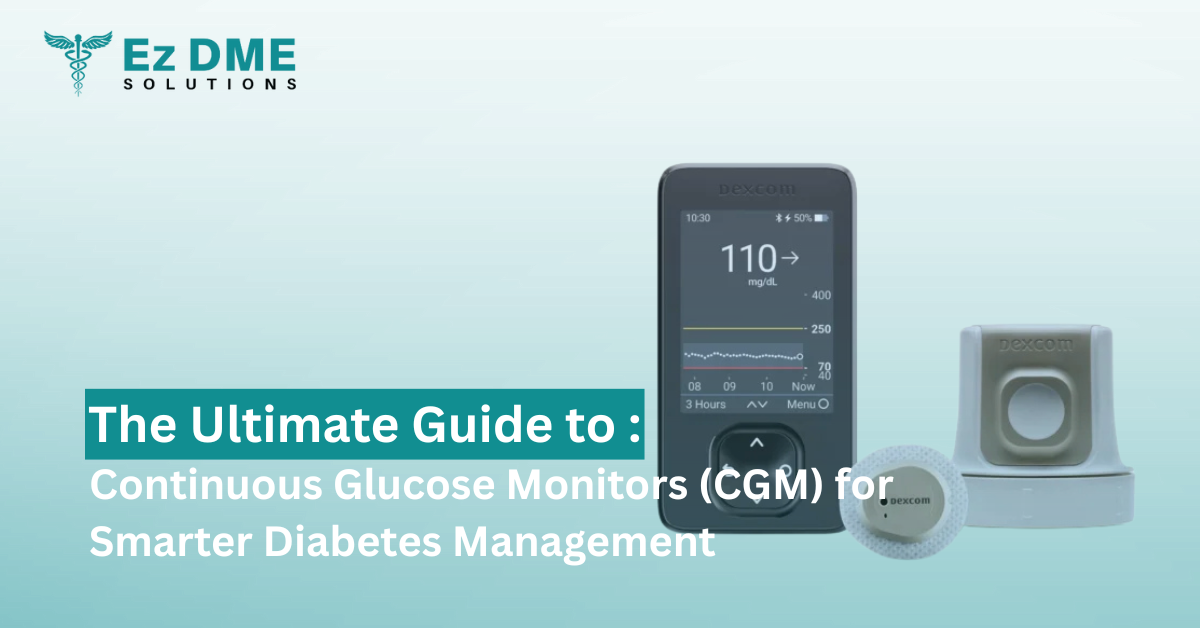No products in the cart.
Can Skinny People Get Diabetes? Common Misconceptions
According to Statista, 6.8% of adults in the underweight or normal weight category are diagnosed with diabetes, compared to 24.2% of adults with obesity. These numbers might surprise you. Seeing such statistics, many think Can skinny people get diabetes too? The answer is yes.
Although obesity has a link with diabetes risk, it doesn’t discriminate. Diabetes in thin or fit people is more common than most think, and it’s caused by genetics, insulin resistance, or lifestyle habits. In actuality, diabetes without being overweight is frequently disregarded, which delays diagnosis.
In this article, we’ll explore the types of diabetes (including Type 1, Type 2, and LADA), how body weight relates to risk, and how lean individuals can manage or even prevent diabetes. We’ll also break down symptoms, risk factors, and simple steps for blood sugar control.
Can Skinny People Get Diabetes?
Diabetes is not exclusive to people who are overweight. There is a higher risk in those with high BMI, but many lean people can also develop this condition. Their diabetes, also called normal weight diabetes or non-obese diabetes, gets misdiagnosed a lot. So, excess weight increases risk, but it is not a requirement for diagnosis. Below, we break down how this applies to the two most common types.
Can Skinny People Get Type 2 Diabetes?
Yes, you can be skinny and have type 2 diabetes. It’s not just a hypothetical, as the American Diabetes Association (2024) report shows that about 15% of newly diagnosed type 2 diabetes occurs in people with normal or low BMI. Type 2 diabetes is caused by insulin resistance, chronic inflammation, genetics (South Asian, African, etc), and visceral fat (hidden fat around organs). These factors can affect people with a healthy BMI or a fit body.
Clinicians now recognise that diabetes 2 in thin or fit people is a critical public health question, as these individuals don’t get screened early.
Can Skinny People Get Type 1 Diabetes?
Type 1 diabetes is an autoimmune condition, so yes. In Type 1 diabetes, the immune system attacks insulin-producing beta cells in the pancreas. It has no connection whatsoever to body weight or BMI. Most of the diagnosed people are within the normal weight range, and some are even underweight. This makes it a prime example of diabetes without being overweight.
Specific Diabetes Types: More Common in Skinny People
We’ve already covered Type 1 and Type 2 diabetes above. But thin individuals can also develop other lesser-known forms, gestational diabetes, lean diabetes, and LADA (Latent Autoimmune Diabetes in Adults). Let’s break them down to see what the connection is between weight and diabetes:
1. Lean Diabetes (MONW & Visceral Fat)
Lean diabetes refers to diabetes in people with a normal or low BMI. The main risk factor of this is visceral fat (hidden fat) and early-life malnutrition. In urban populations, up to 1 in 3 diabetic patients fall into this category.
Although these people don’t show signs of metabolic syndrome, like high blood pressure or abnormal cholesterol, their insulin resistance is just as dangerous. This is also called MONW (Metabolically Obese, Normal Weight) or TOFI (Thin Outside, Fat Inside). The primary issue in this is the fat stored around organs (not under the skin). These body types show a normal appearance while meeting clinical criteria for metabolic syndrome in thin people. There’s an increasing risk of diabetes and cardiovascular disease in such body types. It’s more common among those with:
- Low-income or malnourished childhoods
- A family history of diabetes
- Thin body type with poor muscle mass
- Unstable access to nutrition or care
2. Gestational Diabetes in Thin Pregnant Women
Gestational diabetes is a type of pregnancy-related diabetes that can happen in thin women. All body sizes are impacted by the hormonal changes during pregnancy, which reduce insulin sensitivity. Even though thin women don’t exhibit symptoms, their blood sugar levels can rise dangerously fast. Early management is preferable for the mother’s and the child’s long-term health. For all pregnancies, routine screening is advised between weeks 24 and 28.
Pro Tip!
Glucose monitoring tools like the FreeStyle Libre 3 and Dexcom G6, available at EzDME Solutions, help track gestational diabetes with minimal effort.
LADA (Latent Autoimmune Diabetes in Adults)
LADA is misdiagnosed as Type 2, especially in thin adults. But it’s an autoimmune diabetes, closer to Type 1 in function. The difference is in its slow progression and later onset, typically in adults over 30. Because most LADA patients don’t appear overweight and initially respond to oral medications, doctors often miss it. Over time, insulin becomes necessary. Want to get tested? Test for specific antibodies (like GAD65), as that can help differentiate LADA from true Type 2.
Pro Tip!
For adults managing LADA, accurate monitoring is key. Tools like CGMs, insulin pumps, and basic testing supplies from EzDME Solutions support precise, real-time control.
7 Common Causes and Risks of Diabetes in People with Low Body Weight
1. Family History and Genetic Risk
This is one of the leading causes of diabetes in slim people is if it’s in their family genes. The genes passed down can affect how the body makes or uses insulin, putting people at risk even without extra weight.
2. Hidden Fat and TOFI (Thin Outside, Fat Inside)
People carrying visceral fat (hidden and wrapped around organs) are at risk of insulin resistance if they appear lean. Their blood sugar could go up, making type 2 diabetes more likely.
3. Autoimmune Diabetes (LADA)
LADA stands for Latent Autoimmune Diabetes in Adults, and it can happen to anyone over 30. It often looks like type 2 diabetes at first, but it is more common in lean adults and needs insulin sooner.
4. Hormonal Imbalances (PCOS, Thyroid Issues)
Hormonal imbalance and diabetes go together and are most commonly seen in women with normal BMI but high insulin resistance. Even if you aren’t overweight, medical issues like PCOS or thyroid disease affect how insulin works, hence increasing the chances of lean diabetes.
5. Cortisol Overload
Another main cause of raised blood sugar in thin people or underweight individuals is high cortisol levels. Getting stressed constantly for a long period? Your cortisol might be damaging insulin function and causing stress-induced diabetes.
6. Disordered Eating and Starvation Cycles
Having bad eating habits like skipping meals or eating disorders like bulimia, binge eating can also increase the chances of diabetes, regardless of obesity or thinness. These habits confuse the body’s insulin response, which causes a weakened pancreas, hence unstable blood sugar.
7. Inactivity and Poor Muscle Use
Sometimes, being skinny is just genetics and not the work of a “fit lifestyle”. Not moving your muscles or sitting still causes metabolic syndrome in thin people. The risk of insulin resistance rises with hidden fat or a family history of diabetes.

How to Identify Diabetes Symptoms in Thin Adults
Even without weight gain, there are many signs of diabetes in skinny people. Most of these are overlooked, so recognise them early on for prevention:
- Constant fatigue or low energy
- Increased thirst and dry mouth
- Frequent urination (polyuria)
- Unexplained weight loss
- Blurry or shifting vision
- Tingling in hands or feet
- Cuts or wounds that heal slowly
- Frequent skin or yeast infections
- Brain fog or mood swings
- Drowsiness after eating
- Lightheadedness or dizziness
- Nighttime urination (nocturia)
Diagnosis and Monitoring of Diabetes in Lean Patients
Thin patients have normal BMI, but their glucose and insulin issues still exist. Essential diagnostic tests include:
| Test | Purpose |
| Fasting Plasma Glucose (FPG) | Checks the baseline glucose |
| Hemoglobin A1c | 3-month glucose average |
| Oral Glucose Tolerance Test | Assesses post-meal spikes |
| C-Peptide + Autoantibodies | Distinguishes LADA vs. Type 2 |
| CGM Devices (Libre/Dexcom) | Detect real-time variability |
Why Monitor Diabetes In Skinny People?
Skinny individuals with metabolic syndrome, visceral fat, or LADA experience concealed glycemic fluctuations. Regular screening is needed to detect prediabetes or reactive hypoglycemia early on.
Try a free eligibility check to see if your insurance covers CGM devices. Products like the FreeStyle Libre 3 and Dexcom G6 from EzDME Solutions offer real-time tracking, insulin insights, and early risk detection. Claim yours through insurance or buy directly today.
What Are the Best Ways to Manage Diabetes in Lean People?
Now, as a thin person, you need to know “how to manage blood sugar without needing to lose pounds?” All you need to do is balance stable glucose levels with healthy weight maintenance, not crash diets.
Best Diet Tips for Lean Diabetics
- Eat food for glucose, like low-GI carbs (quinoa, steel-cut oats, and lentils).
- For optimal and controlled weight gain, add healthy fats like avocado, olive oil, or nut butters.
- For insulin function, include high-protein snacks (e.g., boiled eggs, cottage cheese) .
- Use CGM data to identify which meals increase your blood sugar, then adjust accordingly.
- Drink smoothies with chia seeds, Greek yogurt, and almond butter for nutrient-dense calories.
- Do not eat sugar-free processed snacks, as they trigger sugar and cause undernourishment.
- Build muscle with strength training 3 times in 8 days
- Get 7-8 hours of sleep nightly
Common Misconceptions About Diabetes in Skinny People
Here we’ll separate facts from fiction! Here’s a side-by-side breakdown of common myths, and what science really says.
| Myth | The Reality |
| Only overweight people get diabetes | False. Genetics, autoimmunity, and visceral fat matter—even in slim individuals. |
| Thin means healthy | Not always. “TOFI” (Thin Outside, Fat Inside) is a hidden diabetes risk factor. |
| Fit people can’t get diabetes | Fitness helps, but doesn’t override poor insulin response or genetics. |
| Eating disorders can’t cause diabetes | Yes, not eating or binge-restrict cycles can dysregulate insulin production. |
| Skipping meals lowers diabetes risk | Skipping food can cause reactive hypoglycemia, leading to rebound spikes. |
| Screen time doesn’t impact slim people | Inactivity from tech use raises risk, regardless of body size. |
Conclusion
Diabetes doesn’t see weight, waistline, or weekly mileage. It can develop in anyone, from marathon runners to sedentary office workers. When autoimmune or genetic factors are involved, the risks are high. The biggest danger? Late diagnosis in lean patients who “look healthy.” That’s where early screening and real-time medical devices like CGMs from EzDME change outcomes. Lean people who have a family history, unexplained symptoms, or any risk factors, act now! Because in diabetes, body type isn’t protection, and action is prevention.





Leave a Reply